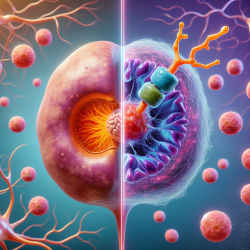Introduction
In the realm of educational and nutritional development, the Ten2Twenty-Ghana study stands out as a pivotal research project aimed at improving the health and nutrition of adolescent girls in Northeastern Ghana. The study's innovative approach, utilizing multiple-micronutrient–fortified biscuits (MMBs), offers insights that can significantly benefit practitioners seeking to enhance their skills in adolescent nutrition and health.
The Study Design
The Ten2Twenty-Ghana study was a 26-week randomized controlled trial involving 621 adolescent girls, both premenarche and postmenarche, aged 10-17 years. The participants were divided into two groups: one receiving MMBs fortified with 11 vitamins and 7 minerals, and the other receiving unfortified biscuits. The study aimed to assess the impact of MMBs on various health indicators, including plasma micronutrient status, cognitive function, and psychosocial health.
Key Findings and Implications
The study revealed significant improvements in the micronutrient status of girls consuming the fortified biscuits. Notably, there was an increase in plasma ferritin and retinol-binding protein levels, which are critical for improving hemoglobin levels and cognitive function. These findings underscore the importance of incorporating fortified foods into adolescent nutrition programs, particularly in resource-poor settings.
Practitioners can leverage these findings by advocating for the inclusion of fortified foods in school feeding programs. The study also highlights the need for targeted interventions before and after menarche, as nutritional needs and physiological responses differ during these stages.
Encouraging Further Research
While the Ten2Twenty-Ghana study provides a robust framework for improving adolescent nutrition, it also opens avenues for further research. Practitioners are encouraged to explore the long-term effects of micronutrient fortification on adolescent health and development. Additionally, investigating the socio-economic factors influencing dietary choices and nutritional status can provide a more comprehensive understanding of adolescent nutrition.
Conclusion
The Ten2Twenty-Ghana study offers valuable insights into the efficacy of micronutrient fortification in improving adolescent health. By implementing the study's outcomes, practitioners can enhance their skills and contribute to breaking the intergenerational cycle of malnutrition. For those interested in delving deeper into the research, the original paper provides a detailed account of the study's design and findings.
To read the original research paper, please follow this link: Ten2Twenty-Ghana: Study Design and Methods for an Innovative Randomized Controlled Trial with Multiple-Micronutrient–Fortified Biscuits among Adolescent Girls in Northeastern Ghana.










